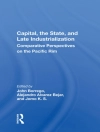Using familiar concepts from classical measurement methods and basic statistics, Hambleton and colleagues introduce the basics of item response theory (IRT) and explain the application of IRT methods to problems in test construction, identification of potentially biased test items, test equating, and computerized-adaptive testing. The book also includes a thorough discussion of alternative procedures for estimating IRT parameters, such as maximum likelihood estimation, marginal maximum likelihood estimation, and Bayesian estimation in such a way that the reader does not need any knowledge of calculus to follow these explanations. Including step-by-step numerical examples throughout, the book concludes with an exploration of new directions in IRT research and development.
Table of Content
Background
Concepts, Models, and Features
Ability and Item Parameter Estimation
Assessment of Model-Data Fit
The Ability Scale
Item and Test Information and Efficiency Functions
Test Construction
Identification of Potentially Biased Test Items
Test Score Equating
Computerized Adaptive Testing
Future Directions of Item Response Theory












